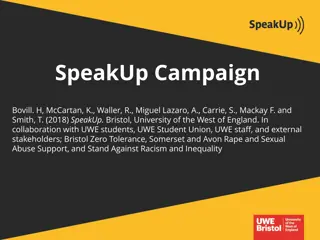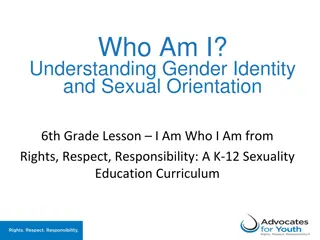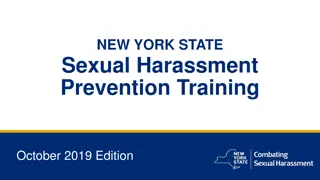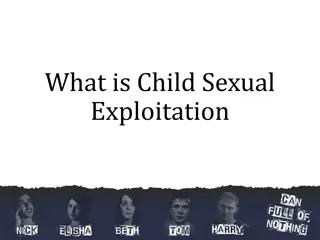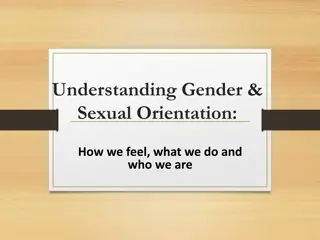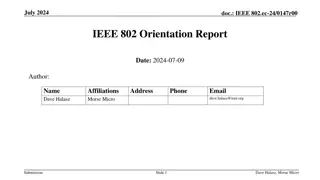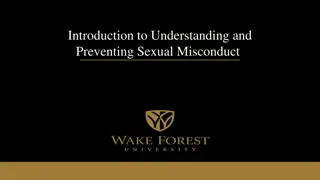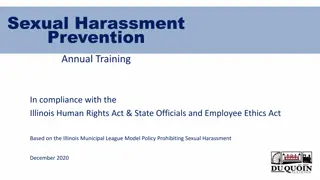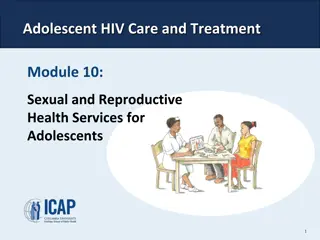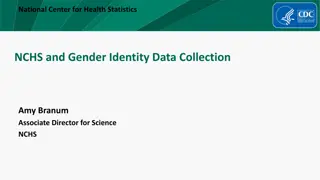Understanding Sexual Identity and Orientation: A Comprehensive Overview
Explore the complexities of sexual identity and orientation, from the Kinsey Scale to contemporary perspectives by Storms and Klein. Delve into the significance of self-acceptance and the diverse spectrum of identities including straight, gay, lesbian, bisexual, queer, asexual, and more in a culture that often poses challenges to sexual minority individuals.
Download Presentation

Please find below an Image/Link to download the presentation.
The content on the website is provided AS IS for your information and personal use only. It may not be sold, licensed, or shared on other websites without obtaining consent from the author. Download presentation by click this link. If you encounter any issues during the download, it is possible that the publisher has removed the file from their server.
E N D
Presentation Transcript
LGBQ: Being Who You Are Leta M. Perriello
Exploring Your Sexuality? Look at your emotional, sexual, and romantic attractions/desires. Are you attracted to men, women, both, neither? Our behaviors also factor in. Have you dated/been sexual with people of one gender or both or neither? What do you see for your future, & long-term, partnership/s?
The Kinsey Scale Alfred Kinsey (the famous sex researcher) primarily considered sexual desire. He thought of sexuality as a continuum (from 0 "exclusively heterosexual" to 6 "exclusively homosexual" with some people being off the scale altogether (X)-- those who had no socio- sexual contacts or reactions.)
After The Kinsey Scale In 1980, Michael Storms further defined sexuality-- paying particular focus on bisexuality and asexuality. He proposed a new sexuality scale using an x-y axis using degrees of homo- and hetero-eroticism to provide clues to identity. For example, bisexuals are said to have high degrees of both hetero- and homo- eroticism, while asexuals are said to be low on both axes. Fritz Klein refined our thinking about sexuality even further. He brought in the concept that sexuality can change throughout our lives (that it is fluid) and that many different factors can influence identity: sexual attraction, sexual behavior, sexual fantasies, emotional preference, and social preference.
Identity Sexual activities do not necessarily denote sexual orientation. Orientation is complex and multidimensional! Identities are varied and unique to each of us: straight, gay, lesbian, bisexual, queer, asexual, pansexual, omnisexual, homosexual... Some people prefer to avoid labels altogether and that's okay too. Identity: a personal and socially meaningful sense of your goals, beliefs, values, and life roles. Consists of individual, relational, and collective identities and includes multiple identities or domains of identity that intersect and interact with each other (Vignoles et al, 2011)
Growing Self-Acceptance As with many different aspects of our identities- we can struggle with acceptance. This is especially true for those identities which have been historically associated with a "less than" status, personal/social alienation, discrimination, victimization, and rejection. When it comes to sexual orientation, we need to recognize that we live in a heteronormative culture with many legal and structural barriers for sexual minority individuals. This doesn't make it easy to live "out and proud." Vivian Cass, back in 1979, developed a foundational theory of gay/lesbian identity development that describes how we move from identity confusion, identity comparison, identity tolerance, identity acceptance, identity pride, and, ideally, to identity synthesis. Later theorists have also included the group membership components of sexual identity. For example, see Fassinger & Miller, 1996 or McCarn & Fassinger, 1996.
Growing Self-Acceptance Of course, many factors come into play in our identity development and our ability to accept and celebrate (either privately or publicly) our sexual orientation. These factors include: Family attitudes regarding sexuality/sexual orientation (which may be influenced by race, ethnicity, religion, socioeconomic class, nationality, politics, etc.) Religious beliefs (your own and your family's) Cultural context (e.g., degree of conservatism in one's "circles" of living) Financial issues (e.g., the idea that one's parents could pull financial support or that one's job would be in jeopardy if one were to "come out") Our "lived experience" -- for example, whether you've been exposed to positive models of diverse sexual orientations, whether you've had opportunities to date same-sex persons, etc. Whether you've been exposed to (actual or perceived threats of) violence or victimization related to perceived difference, etc. Our attitudes toward and privileges afforded to heterosexual and sexual-minority groups given our own set of life circumstances / context
Feeling lost? Contact CAPS! 707.826.3236 or hsucaps@humboldt.edu
Local and National Resources Messages of Hope: http://www.itgetsbetter.org Bisexual Resource Center: http://www.biresource.net/ LGBTQ Nation: http://www.lgbtqnation.com/tag/coming-out/ Humboldt Pride: http://humboldtpride.org/ Human Rights Campaign: http://www.hrc.org/ Parents, Families, & Friends of Lesbians and Gays (PFLAG): http://community.pflag.org/page.aspx?pid=194 Gay Lesbian Directory (LGBT Supportive Businesses): http://gaylesbiandirectory.com/directory/ The Trevor Project (crisis services for LGBTQ youth & young adults): http://www.thetrevorproject.org/
HSU Resources Counseling & Psychological Services: http://www2.humboldt.edu/counseling/index.html Also see the Sexuality & Gender Identity Page: http://www2.humboldt.edu/counseling/sexual_identity.html Critical Race, Gender & Sexuality Studies: http://www2.humboldt.edu/crgs/ The Eric Rofes Multicultural Queer Resource Center: http://www2.humboldt.edu/erc/ Queer Student Union: http://www2.humboldt.edu/clubs/club_sites/qsu1 Queer Workplayce Exchange for Employee Retention & Student Success: http://www2.humboldt.edu/qweerss/calendar.html


